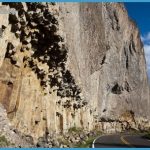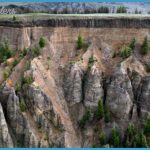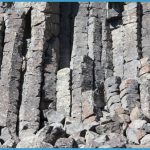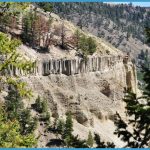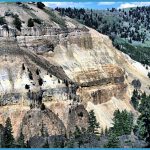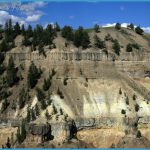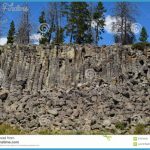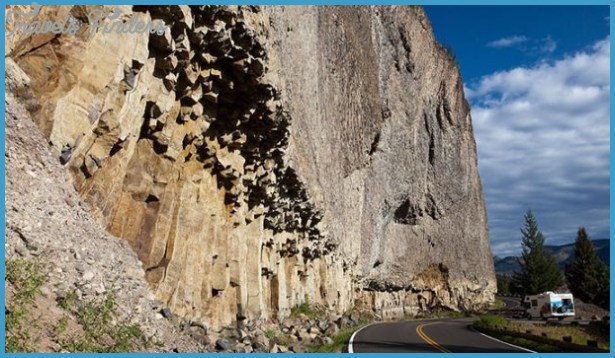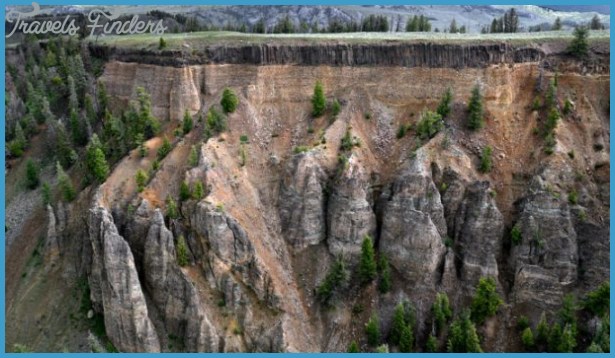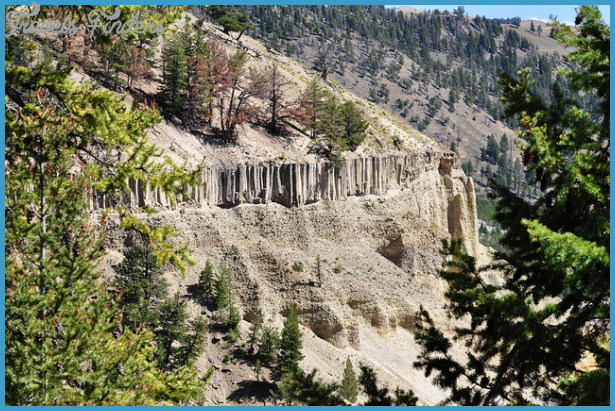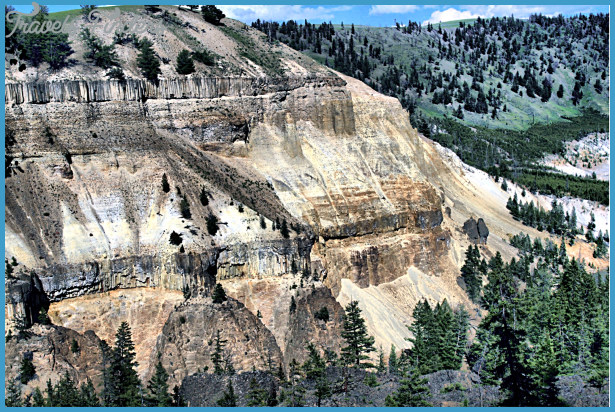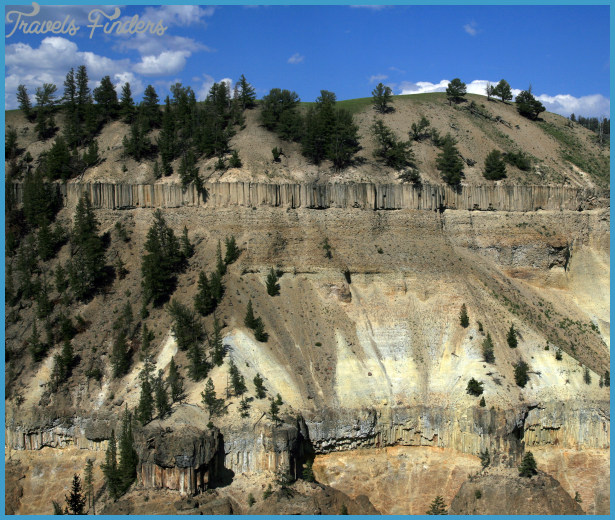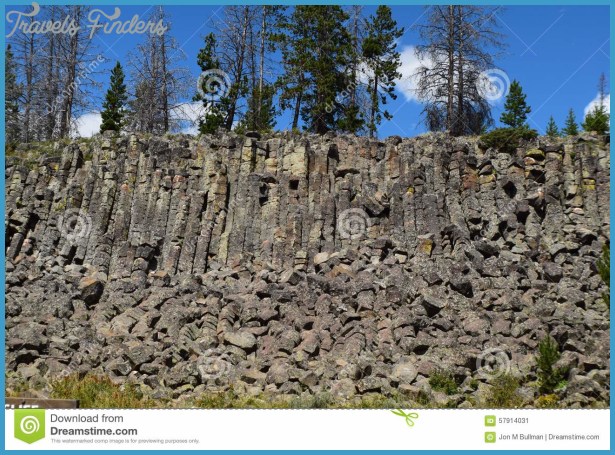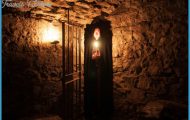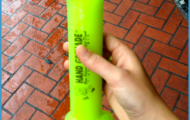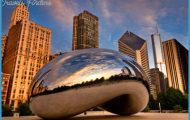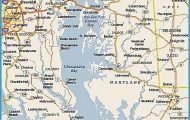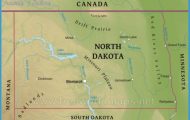The area near Tower has some clear examples of basalt lavas that look like stockade fences. You can see them at the roadside at Overhanging Cliff as well as across the canyon, where two lava flows run horizontally for miles. All of these are fine examples of columnar jointing, that is, structures that look like closely packed, vertical logs of lava. These basalt columns were formed when the lava flowed, stopped, cooled enough to become solid, and then continued to cool and shrink. A solidified lava flow can easily shrink in a vertical direction and still remain homogeneous and unfractured; it simply becomes a thinner lava flow. Cooling rock, however, shrinks in all directions, not just vertically. As it shrinks in the horizontal direction, cracks must form.
The cracks extend and intersect with others, making columns that are polygons, with space between the columns. The process that made the columns is very much like the formation of mud cracks. Just as the sun shining on a mud puddle causes the mud to dry, shrink, and crack, basalt shrinks into columns, but it’s due to cooling rather than drying. If you look at the undersides of the columns here at Overhanging Cliff, you’ll see that the ends are mostly pentagons and hexagons, just like mud cracks. Other good examples of basalt columns are at Sheepeater Cliffs and Mount Jackson.

